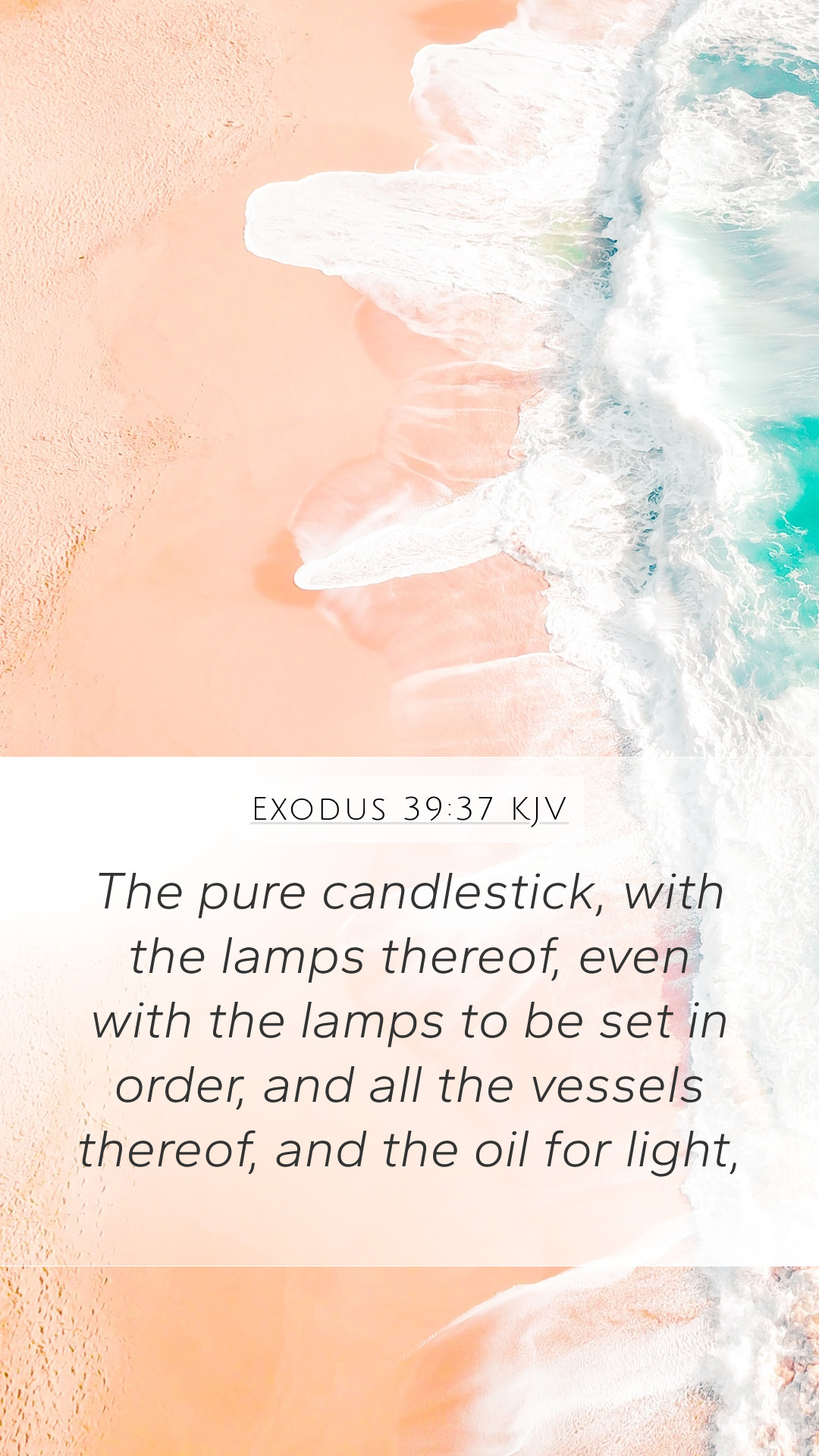Understanding Exodus 39:37
Exodus 39:37 states: “And the clean linen coats, and the bonnets of fine linen, and the linen breeches of fine twined linen.” This verse is part of a detailed description of the garments worn by the priests in the Old Testament. Understanding this verse requires us to delve into the significance of these priestly garments in the context of Israelite worship and service to God.
Bible Verse Meanings
This passage carries profound meanings related to holiness, service, and the meticulous nature of God's requirements for worship.
Insights from Public Domain Commentaries
-
Matthew Henry's Commentary
Henry emphasizes the importance of the priest's garments as a reflection of their sacred role. He notes that these garments were not merely for adornment but were essential for the dignity and holiness required in their service to God. This highlights the need for sincerity and purity in one’s approach to divine service.
-
Albert Barnes' Notes
Barnes discusses the practicality and specific materials used for the garments, pointing out that fine twined linen signifies purity and glory. The emphasis on “clean” garments serves as a reminder of the priestly role in leading the people in holiness, which is an essential aspect of worship.
-
Adam Clarke's Commentary
Clarke adds a historical dimension to the interpretation, mentioning that these garments were prepared according to God's instruction. He explains that each piece of clothing served a purpose in the rituals, symbolizing the priest’s readiness to serve and intercede for the people before God.
In-depth Bible Verse Analysis
The priestly garments described in Exodus 39:37 hold significant weight in understanding the Old Testament's approach to worship. The attention to detail and the emphasis on clean attire signify that God desires His people to come before Him with a heart that is pure and prepared.
Historical Context of Bible Verses
Understanding the background in which these verses were written is crucial. The Israelites were forming their identity as a nation set apart for God, and their worship practices reflected this. The specifics of their priestly garments were intended to teach them about reverence and the holiness of God, which remains relevant today.
Application of Bible Verses to Daily Life
Though the context may seem distant, there are relevant applications for today’s believers. In modern times, the call to purity and holiness in one’s life can be drawn from these descriptions. While we are not bound by the same ritualistic practices, the principles of approaching God with a clean heart apply universally.
Bible Study Insights
For those engaged in Bible study groups or online Bible study, Exodus 39:37 provides a valuable lesson in the seriousness of one’s relationship with God. It also serves as a topic for deeper discussions about what it means to live a life that is honoring to Him.
Additional Resources for Bible Study
- Bible Study Tools: Utilizing commentaries and study guides will enhance understanding.
- Bible Study Lessons: Focusing on the themes of holiness and service in personal or group studies.
- Bible Study Plans: Planning lessons around the importance of worship and the priestly roles in the covenant community.
Significance of Exodus 39:37
This verse illustrates God’s desire for order and holiness within His appointed leaders. It signifies that every aspect of worship requires attention and reverence, laying the groundwork for further interpretation of other scripture passages related to worship and leadership in the church.
Bible Cross References
- Leviticus 8:7-13: The consecration of Aaron and his sons and the garments worn during their anointing.
- Revelation 19:8: The fine linen garments representing the righteous acts of the saints.
- Exodus 28:2-4: Detailed descriptions of the garments and their significance for the priesthood.
Conclusion
In summary, Exodus 39:37 is not merely a simple statement about priestly attire; it encapsulates profound spiritual truths regarding the nature of service, purity, and the worship of the living God. As one engages with this verse and its explanations through public domain commentaries, the study reveals the timeless relevance of Scripture in understanding the relationship between God and His people.


